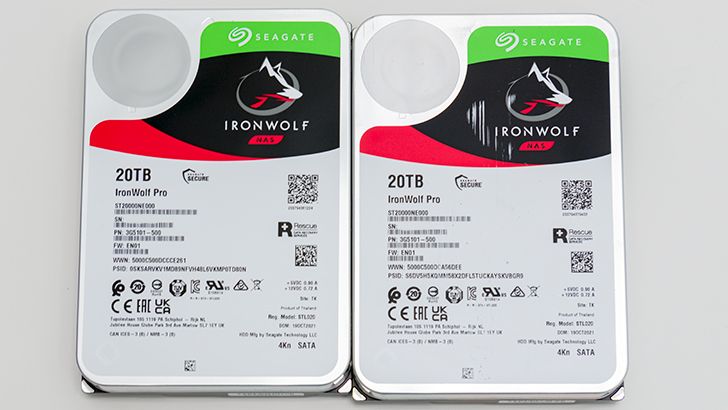Recently we took a pair of Exos X20’s for a test drive and walked away very, very impressed with Seagate’s Twenty Terabyte market strategy. Without rehashing too much of that review, the combination of even greater bit density combined with some tweaks to the MTC algorithms allows Enterprise buyers the luxury of not having to worry about if Heat/Energy Assisted Technology is actually ready for prime time. Instead, the X20’s can be considered drop-in replacements for Exos X14/X16/X18 drives. Drop-in replacements that in addition to providing more capacity (and thus lower watts per TB) also offer increased performance without any additional longevity concerns. Sadly, as the Exos is an Enterprise grade series the asking price is well… decent for Enterprise consumers but not exactly reasonable for home users…. SOHO buyers… or even typical SMBs. Mix in firmware that is in no shape nor form optimized for anything other than Enterprise needs and the X20 is a harder sell than the Exos X18 was/is. That is where the IronWolf Pro 20TB enters the equation.

With an (average online) asking price of $600 the ‘Wolf Pro 20TB is still expensive but is more palatable than the X20’s $670 price tag. Not enough to offset the reduction in Total Bytes Written yearly rating of 300TB vs. the Exos X20’s 500TB for ‘serious’ business buyers, but certainly a step in the right direction for everyone else. In the coming months we expect the IronWolf Pro 20TB’ers asking price to start to fall further via market corrections (as the market has already corrected by $50 from launch day MSRP of $650), but the main attraction of the IronWolf Pro series has always been (and probably always will be) the tweaks Seagate make to the Exos blueprint in order to create the IronWolf Pro series.
On the hardware front, Seagate slightly reduces the robustness of the Exos line in their IronWolf Pro variants, but the differences are minor for typical SMBs and non-existent for SoHo scenarios. Buyers still get overkill levels of vibration resistance and enhanced durability. They still get access to those sweet, sweet 2.22TB platters. The same controller. The same RAM. Basically, minor differences that make it easier to make and certify from Seagate’s perspective but still darn near bullet proof from non-Enterprise buyers’ perspective.
Instead of gutting the hardware to differentiate the two lines, the main difference Seagate makes is in the firmware each come with. In some ways the IronWolf Pro’s firmware is ‘better’ than the tweaks Seagate does to Exos’ algorithms… or at least better for non-Enterprise storage servers. Where the Exos X20 excels at deep queue depths while still being smoking hot at shallow, the IronWolf is optimized for shallow to medium queue depths. Shallow to medium is another way of saying “tailor made” for home users and typical SoHo/SMB Network Attached Storage devices where there simply is not the same number of concurrent requests as there is in an enterprise environment.
In this vein Seagate has gone above and beyond for the IronWolf Pro 20TB and the results will indeed speak for themselves. The only real questions typical buyers who want/need/desire 20TB of capacity per drive is two-fold. First, is the differences enough to justify the difference in price between the truly bullet-proof Exos X20 and the mostly bullet-proof IronWolf Pro 20TB? The other is the yearly question on whether or not buyers should they be looking at last year’s flagship 18TB ($550’ish USD) IronWolf Pro and save some money over this years new sexy. After all, flagship models always come with a price premium, but said premium is not always justified.









